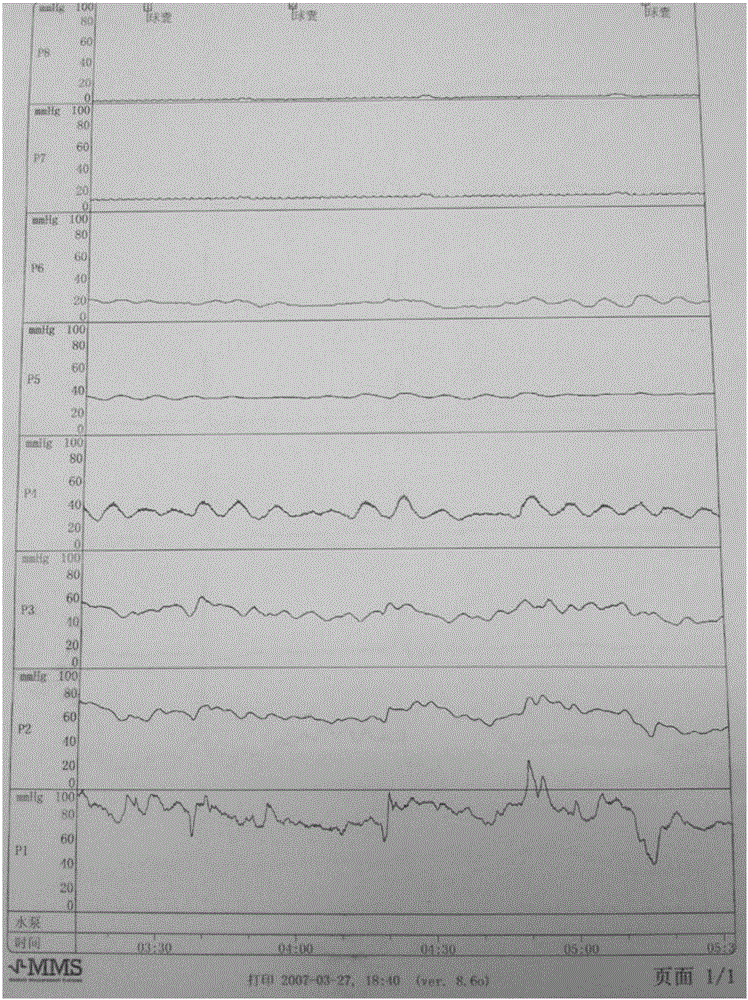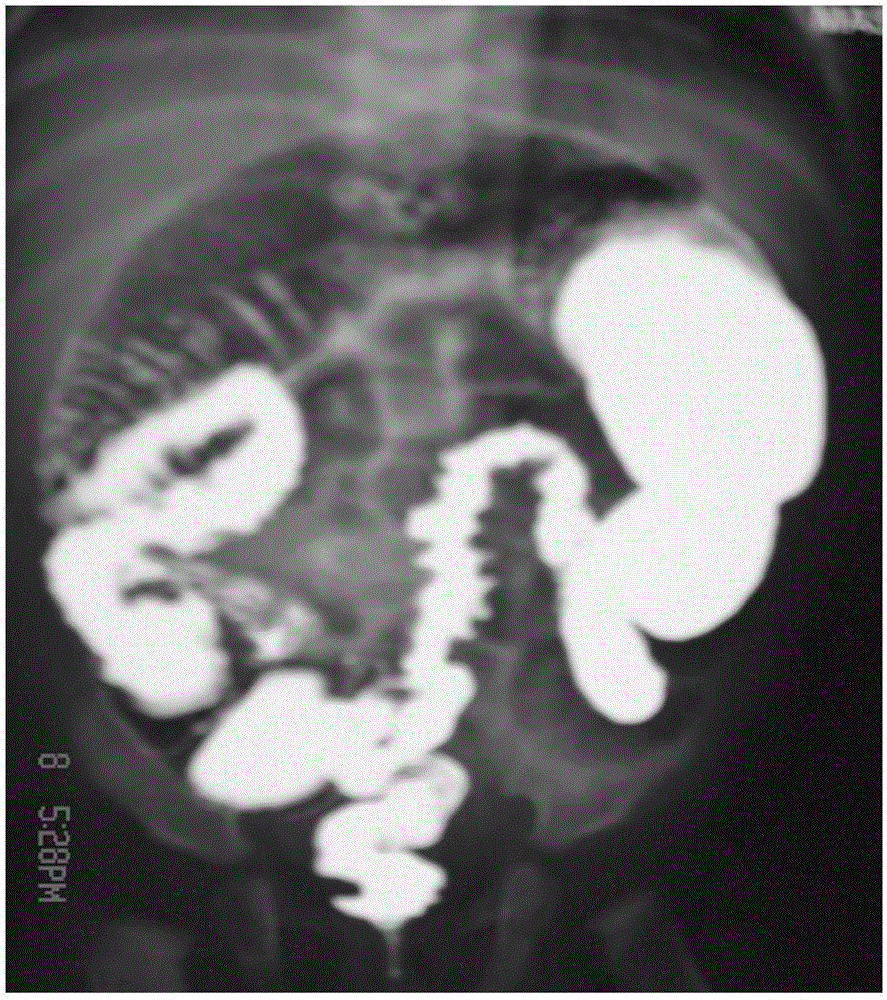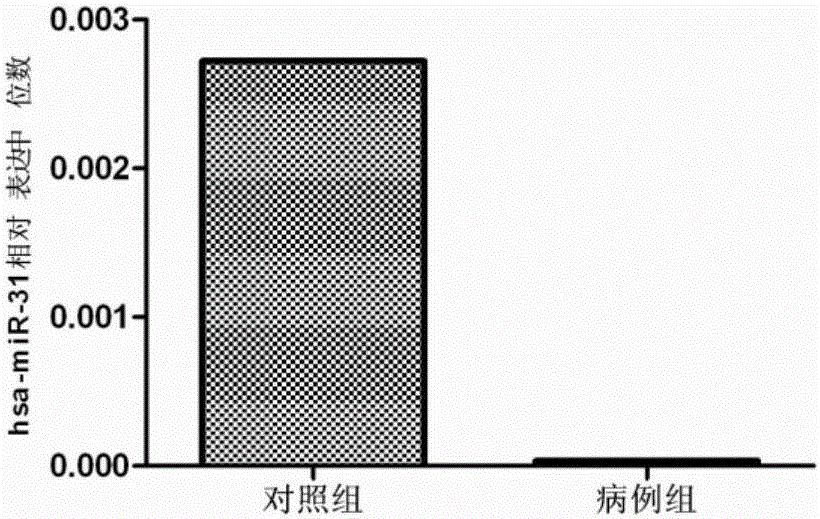Plasma miRNA markers associated with common congenital intestinal aganglionosis and its application
A technology of ganglion cells and markers, applied in the fields of genetic engineering and clinical medicine, can solve problems such as lack of corresponding attention
- Summary
- Abstract
- Description
- Claims
- Application Information
AI Technical Summary
Problems solved by technology
Method used
Image
Examples
Embodiment 1
[0086] Example 1 Research object selection and grouping basis
[0087] From July 2009 to September 2011, the inventor collected common congenital intestinal agangliocytosis children and children with normal non-congenital intestinal agangliocytosis from hospitals such as the Children's Hospital of Nanjing Medical University. Blood and tissue samples (see for clinical diagnostic criteria figure 1 , figure 2 ), after sorting out the sample data, 100 healthy controls (average age: 89.45±9.1 days) and 100 patients with common intestinal aganglionosis (average age: 92.3±7.01 days) were selected. ) As the experimental object of Real-timePCR to detect miRNA expression. The specific sample classification standards are as follows:
[0088] Group A: healthy control group (n=100, 20 people are screened by chip, 40 people are first-phase verification, 40 people are independent population verification):
[0089] 1. Age between 0 and 6 months;
[0090] 2. No digestive system diseases;
[0091] 3....
Embodiment 2
[0100] Example 2 Pathological Diagnosis Classification of Research Object
[0101] Anorectal manometry, imaging examination, and histological examination of the rectal wall are used to diagnose intestinal agangliosis and preliminarily determine the type of children with past delayed meconium discharge, repeated defecation difficulties, abdominal distension, and low intestinal obstruction. Anorectal manometry is mainly manifested as lack of internal anal sphincter relaxation reflex; anal canal rhythmic contraction is significantly reduced; resting pressure of internal rectal sphincter is higher than normal. The imaging findings are as follows: 1. There is an obvious transitional separation area between the lesion and the expansion, which is a "cone" shape; 2. The lesion starts from the anus and extends upward to the distal end of the sigmoid colon; 3. The lesion is innervated abnormally Therefore, irregular shrinkage can be seen; 4. Barium retention, which may not be discharged af...
Embodiment 3
[0102] Example 3 TaqmanmiRNAarray screening
[0103] Prepare cDNA samples: a) Take 100μl plasma; b) Add 900μl Trizol, shake and mix, 4℃, 12000 rpm for 15 minutes, discard the lower layer of waste; c) Add 1.5 times the volume of the supernatant absolute ethanol, shake and mix, turn To the spin column, centrifuge at 12,000 rpm for 15 seconds, and discard the lower layer of waste; d) Add 700μl RWT buffer to the spin column, centrifuge at 10,000 rpm for 15 seconds, and discard the lower layer of waste. e) Add 500μl RPE buffer to the spin column, centrifuge at 10000rpm for 15 seconds, and discard the lower layer. f) Repeat e. g) Add the spin column to a new 2ml tube and centrifuge at 10000rpm for 1 minute to remove the RPE buffer. h) Add 50μl DEPC-treated water to the column and centrifuge at 12000rpm to collect RNA. i) Then cDNA is obtained by RNA reverse transcription reaction. The reverse transcription reaction system includes 4μl of 5×AMV buffer, 2μl of 10mM dNTP mixture (Taka...
PUM
| Property | Measurement | Unit |
|---|---|---|
| Sensitivity | aaaaa | aaaaa |
Abstract
Description
Claims
Application Information
 Login to View More
Login to View More - R&D
- Intellectual Property
- Life Sciences
- Materials
- Tech Scout
- Unparalleled Data Quality
- Higher Quality Content
- 60% Fewer Hallucinations
Browse by: Latest US Patents, China's latest patents, Technical Efficacy Thesaurus, Application Domain, Technology Topic, Popular Technical Reports.
© 2025 PatSnap. All rights reserved.Legal|Privacy policy|Modern Slavery Act Transparency Statement|Sitemap|About US| Contact US: help@patsnap.com



